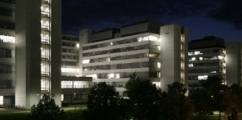Staphylococcus aureus is a Gram-positive pathobiont, a member of the human microbiota that can become pathogenic under certain conditions. As a commensal, S. aureus can colonize various body sites such as the nose, intestines, and skin. Nasal carriage, for instance, affects 30–50% of individuals and increases the risk of subsequent infection. S. aureus infections are diverse, ranging from skin and bloodstream diseases to chronic lung infections in Cystic Fibrosis (CF) patients.
Despite decolonization and antibiotic treatments, eradication is rarely achieved, underscoring our limited understanding of the mechanisms that enable S. aureus to persist in diverse host-associated niches. Its success relies on adaptation to environmental pressures, including interactions with resident microbial communities that shape its metabolism and access to essential resources.
In this presentation, I will focus on two examples illustrating how S. aureus physiology is shaped by nutritional interactions with coexisting microorganisms, using -omics and interaction-based approaches on colonization and infection strains:
- In the context of CF lung infections, S. aureus engages in a trophic cooperation involving acetoin with Pseudomonas aeruginosa, promoting the survival of both species1.
- In the nasal ecosystem, certain S. aureus strains develop an auxotrophy for tyrosine, making them dependent on commensal nasal communities to acquire this amino acid and successfully colonize the niche 2.
References
- Camus L, Briaud P, Bastien S, et al. Trophic cooperation promotes bacterial survival of Staphylococcus aureus and Pseudomonas aeruginosa. ISME J. 2020;14(12):3093-3105. doi:10.1038/s41396-020-00741-9
- Camus L, Franz J, Gerlach D, et al. Tyrosine availability shapes Staphylococcus aureus nasal colonization and interactions with commensal communities. bioRxiv. Preprint posted online May 6, 2025:2025.05.06.651429. doi:10.1101/2025.05.06.651429



